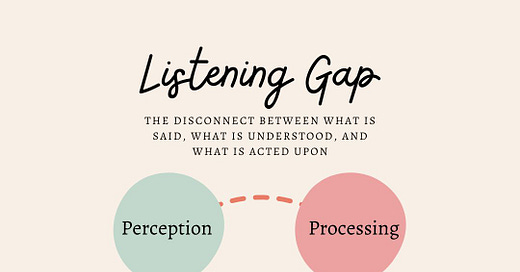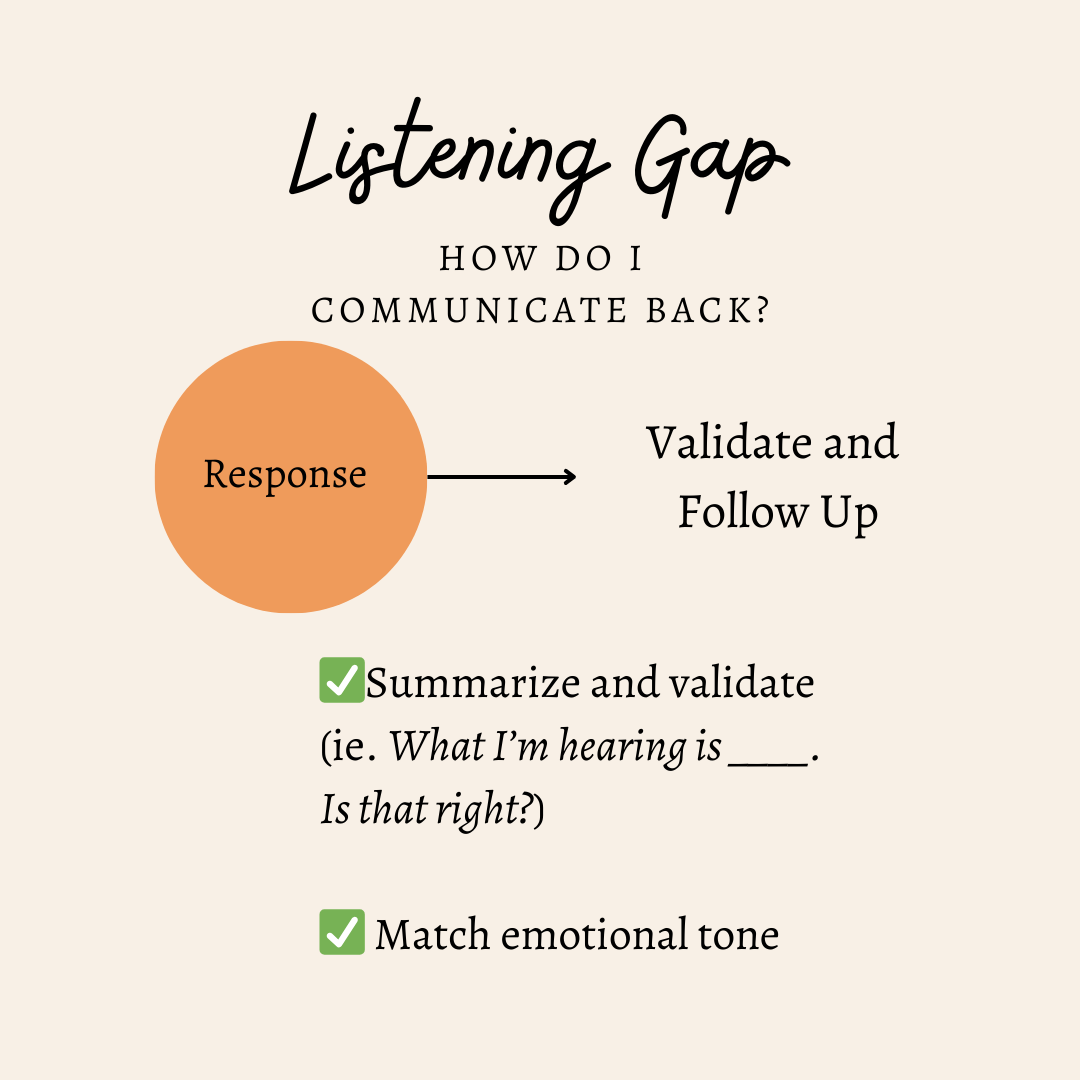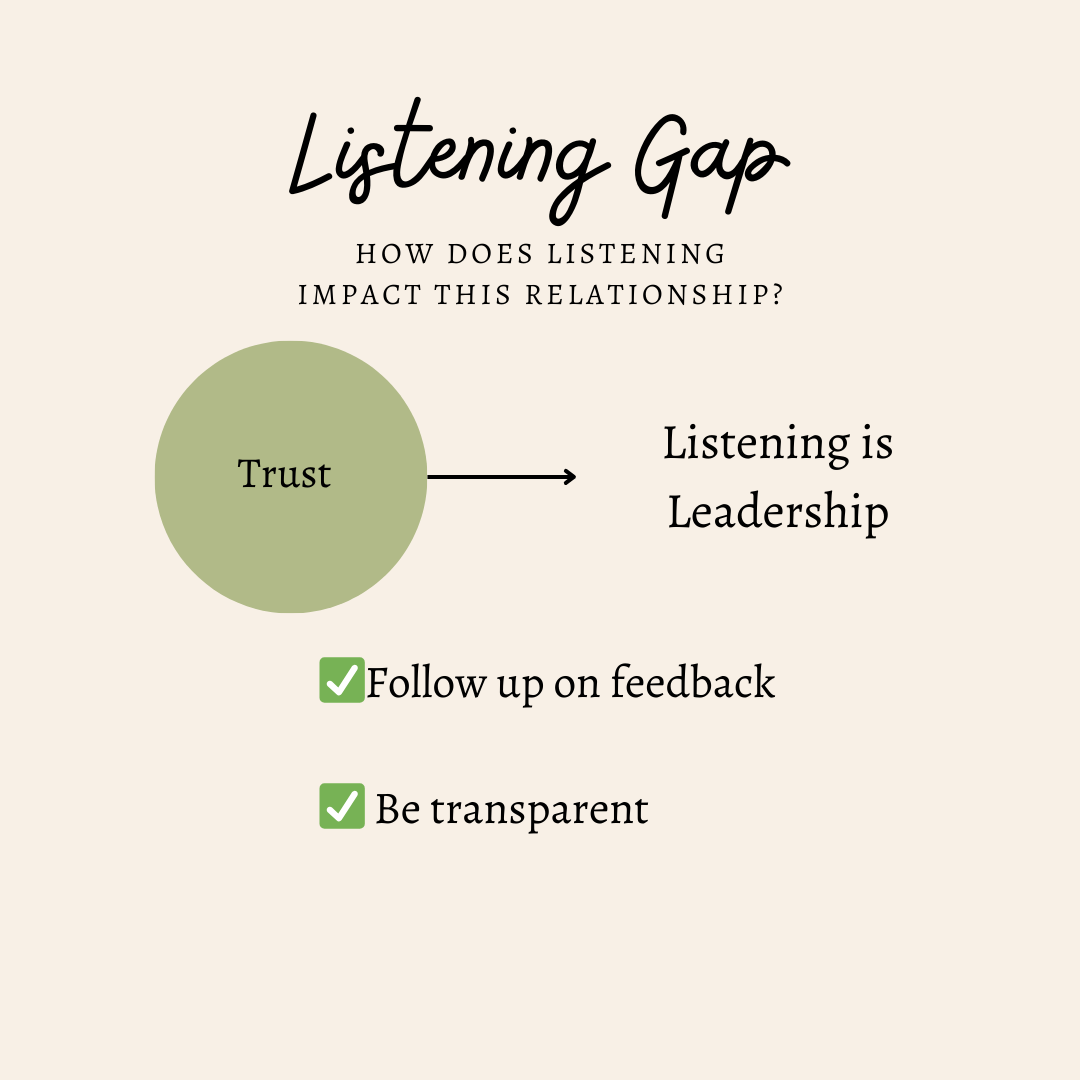“They never listen.”
It’s a phrase we’ve all heard before—or maybe even said ourselves. A teacher vents to a colleague after a leadership meeting. A parent walks away from a conference frustrated. A student shrugs off a conversation because, deep down, they don’t believe their words will change anything.
As a school leader, you might think, That’s not true! I listen all the time!
But listening isn’t just about hearing words—it’s about understanding, responding, and building trust. Somewhere between what is said, what is understood, and what is acted upon, there’s often a gap.
What Does the Listening Gap Look Like?
The Teacher’s Frustration
A teacher tells their principal, “We need more support with behavior.” The principal nods, acknowledges the concern, and moves on. A week later, the teacher still feels unsupported, while the principal assumes they addressed the issue by listening. The gap? No follow-up, no clear response, and no action.
The Student Who Stopped Talking
A middle schooler tells a counselor, “I don’t feel safe in class.” The counselor reassures them and says they’ll look into it, but the student sees no changes. Eventually, they stop sharing concerns because they don’t believe their voice matters.
The Leadership Disconnect
A district leader asks principals in a meeting, “What do you need most right now?” Some mention professional development, others talk about staffing challenges. The leader acknowledges everything but offers a one-size-fits-all solution. The principals walk away feeling unheard—again.
In each case, words were spoken, and words were heard. So why did the message get lost?
The Four Gaps in Listening
1️⃣ Perception Gap: What I think I heard vs. what they actually meant.
2️⃣ Processing Gap: How I interpret what I heard vs. what they intended to communicate.
3️⃣ Response Gap: What I say or do vs. what they expected as a response.
4️⃣ Trust Gap: The long-term impact of my listening (or failure to listen) on our relationship.
How to Close the Listening Gap
💡 1. Perception: Check Your Assumptions
Instead of assuming, ask: “When you say ‘more support,’ what would that look like to you?”
Pay attention to non-verbal cues. Someone’s tone, body language, or hesitation might signal there’s more beneath the surface.
💡 2. Processing: Slow Down and Reflect
Ask yourself: Am I listening to respond, or listening to understand?
If you’re already forming a solution in your head before they finish speaking, you’re likely missing something.
💡 3. Response: Validate and Follow Up
A simple “I hear you” isn’t enough. Instead, say: “What I’m hearing is ____. Is that right?”
If action is needed, follow up. If nothing can be done, explain why. Trust builds when people feel their words matter.
Match the emotional tone. If someone is frustrated, acknowledge their emotions before moving to solutions.
💡 4. Trust: Listening is Leadership
If you listen but never act, people will stop sharing.
If you respond without truly understanding, people will feel dismissed.
If you assume instead of asking, you widen the gap.
How Do You Know If You Have a Listening Gap?
Here’s a quick test:
✅ Do people regularly come to you with concerns, or do they avoid tough conversations?
✅ When you respond to someone, do they nod and engage—or do they seem checked out?
✅ Have you ever been surprised to hear that someone felt unheard, even though you thought you listened?
If you’re nodding along, there’s a good chance the Listening Gap is playing out in your circle.
The Leader’s Commitment to Listening
Listening isn’t a soft skill—it’s a leadership skill. The best school leaders don’t just hear words. They:
🎯 Pause before responding.
🎯 Check for assumptions.
🎯 Validate emotions.
🎯 Follow through.
Because when people feel truly heard, they trust more, engage more, and invest more in the work that matters most.
Am I just hearing? Or am I truly listening?













Listening to respond or listening to understand...seven words that can make a big difference in our lives. Thank you for this. Listening feels small because it's quiet. It probably is the most important part of almost anything in our lives.